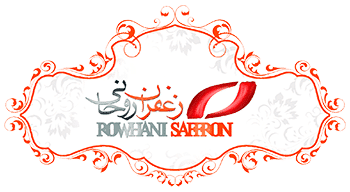Fars province situation in saffron production
Fars is one of the most important provinces of the country in the agricultural sector, but many of the province’s products are not well-known in the country despite the small volume and the high quality.
According to ISNA’s agricultural correspondent in Fars area of Shiraz, Fars province, in addition to wheat, which in the past 26 years and at a relatively high level, has the country’s first title, has been engaged in the production of crops and gardens such as figs, walnuts, citrus fruits, especially lemons , Dates, apples, pomegranates, beets, cotton, grains and grains and saffron are always among the provinces with the highest production.
In Fars province due to climate variation, in all seasons of the year, agriculture and horticulture sector is active and offers its various products to domestic and foreign markets, but the brands that are labeled on the products of Fars are denoted The name of this province is not the main producer.
Today, perhaps every Iranian in any part of the country has seen or understood the figurative statuettes, but less than anyone knows that Estahban is one of the provinces of Fars province, which has the highest volume of fig production, and is also a qualitatively desirable product.
Nowadays, all Iranians know Golab-Qasemar but Golab-Meymand and Darab remain obscure, while in Darab and Meymand several times ten times more than Qamesar has been and has been produced by Golmohammadi and Golab, and flower growers in these two points claim that the Qasemar Kashbar Golmohammadi’s meeting will provide a large part of their needs through them !!
Throughout Iran, saffron of Mashhad is famous, but saffron of Fars, especially Estahban, is not known as it is worthy of this product, while a large part of saffron businessmen know that if saffron of Estahban and Khorasan are blended together, It has an excellent aroma and a good taste.
We always see that the Persian and Shiraz marshals returning from Mashhad bring saffron souvenirs, although they know that Fars is the saffron production pole itself.
According to ISNA, saffron production is one of the toughest products in the agricultural sector, because, despite the low demand for this product, it is water resistant and resistant to difficult conditions, but at the time of harvest, only one gram of saffron is obtained from each of the twenty proper flowers.
“This year, 460 hectares of agricultural land in the province have been allocated to saffron cultivation, which is 20% higher than last year,” said the director of the agricultural Jihad in Fars province.
Assad Sharifi, reminding that this year’s forecast of more than 2 tons of saffron production in Fars, said: Fares is among the top five provinces of the country in the production of Zeghran.
Sharifi pointed out: the stealomaniac of saffron production is in Fars province, which produces more than 90 percent of the province’s saffron due to the proper climate, and the average harvest in the saffron fields of this city is between 4.5 and 5.5 tons per hectare.
He said that at the country level, the average production of saffron in the fields per hectare is at least 4 and a maximum of 5 tons, said the rate is higher in Estahban.
Fars Agricultural Jihad Director of Horticulture also said: due to suitable rainfall, good irrigation of farms and high yielding operations, the yield of saffron production per hectare has increased by 2 to 3 percent, so it is expected that 2,300 tons of saffron will be harvested from Fars farms.
The official said that Estahban, Bavanad, Abadeh, Eghlid and Sepidan are among the producing cities of saffron in Fars province, and the harvesting of saffron in Fars province will start from mid-November.
According to the director of gardening affairs of Fars Jahad-e-Agriculture Organization, the history of saffron planting in this city dates back 200 years ago, that the existence of suitable climatic conditions in Estahban and the low demand of this plant for water are reasons for the continued cultivation of this product.
Given that for the production of one gram of saffron, at least 20 flowers have to be collected and the flag should be separated, it can be estimated how hard it is to produce two thousand and 300 tons of saffron.
According to ISNA, Iran produces and supplies more than 95% of the world’s demand for saffron, and the main countries that import Iranian saffron can be mentioned in China, Germany, Britain and the Persian Gulf countries.
Fars has a good position in producing citrus, pomegranate, apple, dates and persimmons in the country. Jahrom, Darab, Kazeroon and Lar and Lamard are among the producers of dates such as dates and citrus, and Niriz and Arsanjan have good rankings in pomegranate production. And cities such as Sepidan, Eghlid, Beyaz, Khorambid, Bavanat and parts of Shiraz in the field of production of apples, walnuts and pomegranates … have always been the top producers of these products.
According to ISNA and according to the director of agriculture Jihad in Fars province, after years of research and efforts of experts of this organization, the possibility of cultivation outside sugar beet season has been provided in this province.
Mehrzad kherad emphasized that this product also needs to be less water than the type of spring to the water, as well as to a higher level of quality.
In recent years, Fars has done a great deal to produce quality products and produce organic products due to the research and research activities that were carried out in order to adapt the type of product to the appropriate place. Despite the persistence of droughts and the decline in groundwater levels and the problems that occurred in the plains of Fars, In the production of products that have the brand of this province, it works.
However, in introducing and introducing Fars crops, we still need more work and more effort.
source: isna /ir







Get Social